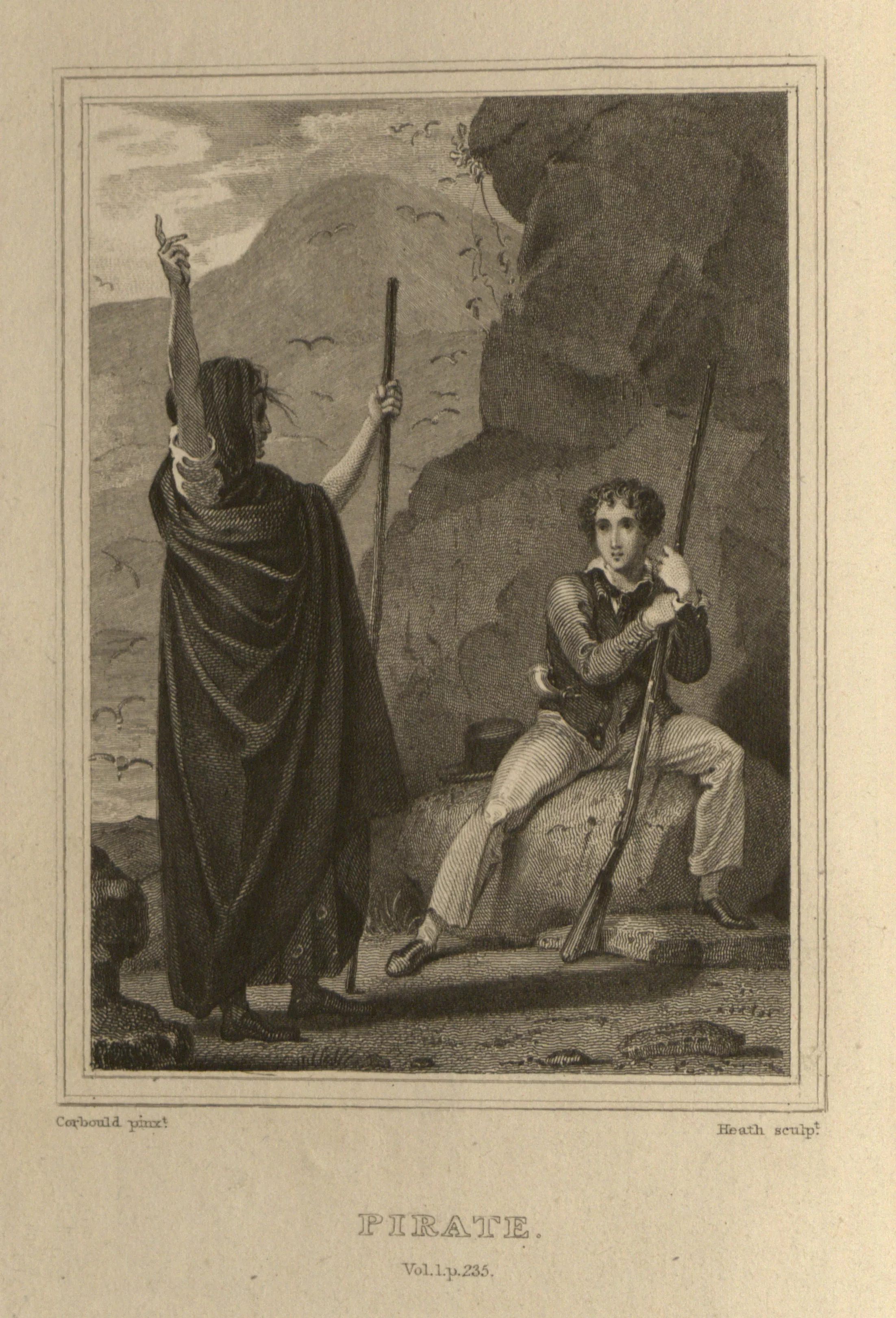Exhibit
Creation Date
1807
Height
11 cm
Width
8 cm
Medium
Genre
Description
This image depicts the encounter between a pirate and a gypsy, emphasizing their common status as nomadic outcasts at once romanticized and rejected by society.
A young man, seated with a long rifle on a rock, wears a dark jacket and light trousers. A horn is strung around his neck and a brimmed hat lies at his side. He is addressed by a woman with a large staff who is dressed in a long patterned skirt and a long dark cloak. With her right hand she points to the sky. The two figures occupy a rocky, coastal landscape with sparse vegetation, populated by birds.
The 1744 Vagrancy Act mandated that gypsies, beggars, strolling actors, peddlers and gamblers refusing to work for usual or common wages could be whipped or imprisoned by local magistrates (Mayall 258). In this way, any person refusing to participate in a wage-based system of labor was deemed criminal. The 1810 Licensing Act required the licensing of vagabonds, gypsies, hawkers and peddlers (Hawkes 13). This system of identification contributed to the surveillance of wandering persons and helped to enforce local ordinances specifying the maximum stay of non-residents in a town or its outskirts.
The publishers seem to have appropriated this image from another context for inclusion in Grellmann’s book, and thus its relationship to the text seems somewhat tenuous. However, the juxtaposition of two wandering figures, an archetypal nomad of the sea and an archetypal nomad of the land, suggests the association of gypsies and pirates in the English imagination. Here, the gypsy woman makes a prophetic gesture and leans on a tall staff in an iconic pose that would be much repeated later in the century. We see just such a stance taken by Meg Merrilies, the gypsy prophet, in the illustrations for Sir Walter Scott’s Guy Mannering (1815), as well as in the plates of Terry’s theatrical production of the novel, such as the colored stipple engraving of Sarah Egerton as Meg Merrilies by James Thomson (after Samuel De Wilde) held by the National Portrait Gallery, London.
Collection
Accession Number
Thordarson T 1836
Additional Information
Bibliography
Grellmann, Heinrich Moritz Gottlieb. Dissertation on the Gipseys. London: William Ballintine, 1807. Print.
Hawkes, Derek and Barbara Perez. The Gypsy and the State: The Ethnic Cleansing of British Society. Oxford: Alden P, 1995. Print.
Heath, John. “Heath family (per. c.1775–1898).” Oxford Dictionary of National Biography. Ed. H. C. G. Matthew and Brian Harrison. Oxford: OUP, 2004. Web. 12 Mar. 2009.
Mayall, David. Gypsy Identities 1500-2000: From Egipcyans and Moon-men to the Ethnic Romany. New York: Routledge, 2004. Print.
Peltz, Lucy. “Corbould, Henry (1787–1844).” Oxford Dictionary of National Biography. Ed. H. C. G. Matthew and Brian Harrison. Oxford: OUP, 2004. Web. 14 Mar. 2009.

